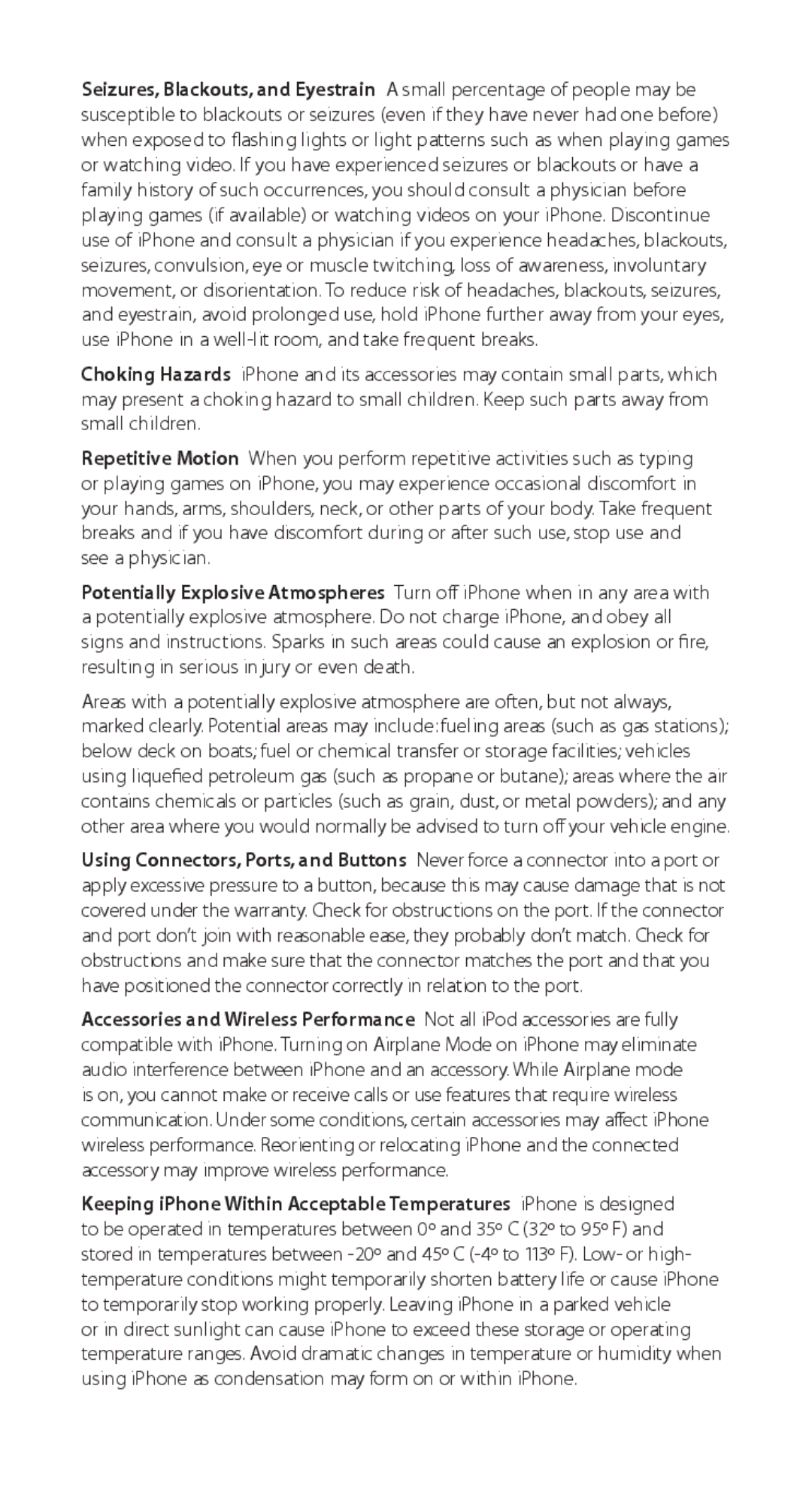Seizures, Blackouts, and Eyestrain A small percentage of people may be susceptible to blackouts or seizures (even if they have never had one before) when exposed to flashing lights or light patterns such as when playing games or watching video. If you have experienced seizures or blackouts or have a family history of such occurrences, you should consult a physician before playing games (if available) or watching videos on your iPhone. Discontinue use of iPhone and consult a physician if you experience headaches, blackouts, seizures, convulsion, eye or muscle twitching, loss of awareness, involuntary movement, or disorientation. To reduce risk of headaches, blackouts, seizures, and eyestrain, avoid prolonged use, hold iPhone further away from your eyes, use iPhone in a
Choking Hazards iPhone and its accessories may contain small parts, which may present a choking hazard to small children. Keep such parts away from small children.
Repetitive Motion When you perform repetitive activities such as typing or playing games on iPhone, you may experience occasional discomfort in your hands, arms, shoulders, neck, or other parts of your body. Take frequent breaks and if you have discomfort during or after such use, stop use and see a physician.
Potentially Explosive Atmospheres Turn off iPhone when in any area with a potentially explosive atmosphere. Do not charge iPhone, and obey all signs and instructions. Sparks in such areas could cause an explosion or fire, resulting in serious injury or even death.
Areas with a potentially explosive atmosphere are often, but not always, marked clearly. Potential areas may include: fueling areas (such as gas stations); below deck on boats; fuel or chemical transfer or storage facilities; vehicles using liquefied petroleum gas (such as propane or butane); areas where the air contains chemicals or particles (such as grain, dust, or metal powders); and any other area where you would normally be advised to turn off your vehicle engine.
Using Connectors, Ports, and Buttons Never force a connector into a port or apply excessive pressure to a button, because this may cause damage that is not covered under the warranty. Check for obstructions on the port. If the connector and port don’t join with reasonable ease, they probably don’t match. Check for obstructions and make sure that the connector matches the port and that you have positioned the connector correctly in relation to the port.
Accessories and Wireless Performance Not all iPod accessories are fully compatible with iPhone. Turning on Airplane Mode on iPhone may eliminate audio interference between iPhone and an accessory. While Airplane mode is on, you cannot make or receive calls or use features that require wireless communication. Under some conditions, certain accessories may affect iPhone wireless performance. Reorienting or relocating iPhone and the connected accessory may improve wireless performance.
Keeping iPhone Within Acceptable Temperatures iPhone is designed to be operated in temperatures between 0º and 35º C (32º to 95º F) and stored in temperatures between
or in direct sunlight can cause iPhone to exceed these storage or operating temperature ranges. Avoid dramatic changes in temperature or humidity when using iPhone as condensation may form on or within iPhone.
